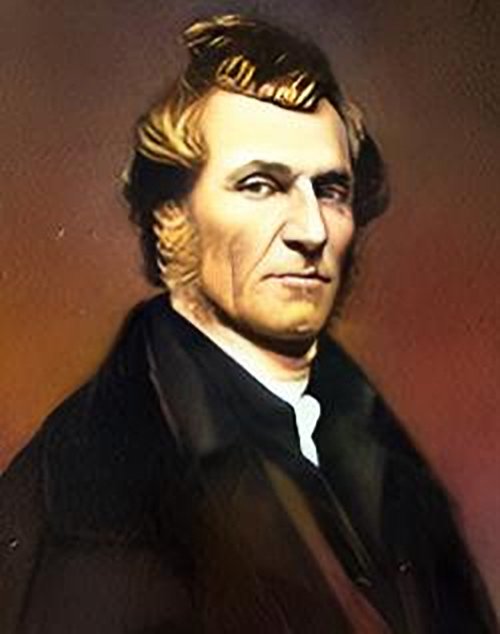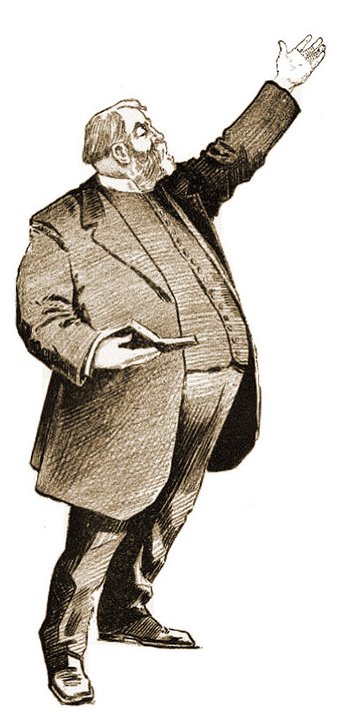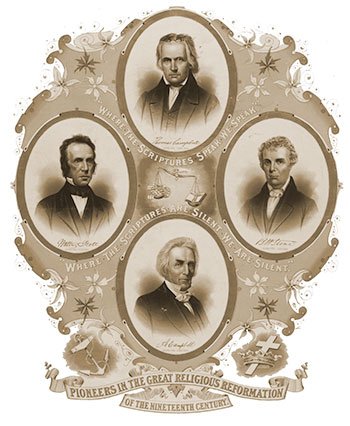1841-60s James Caughey Revivals in UK

James Caughey
Introduction
The 19th century in Britain was a period of profound transformation, marked by rapid industrialization, significant social upheaval, and evolving intellectual currents.1 Amidst these changes, religion remained a powerful force, shaping social norms, political discourse, and individual lives.3 Within this dynamic context, religious revivals emerged as recurring phenomena, characterized by periods of heightened spiritual fervor and a renewed focus on personal faith and conversion.5
Among the various figures who contributed to this revivalist landscape, the American Methodist evangelist James Caughey stands out for his impactful ministry in the United Kingdom between 1841 and the 1860s.7 This article aims to provide a comprehensive analysis of the Caughey Revivals in the UK during this period, exploring their historical context, key individuals, locations, events, outcomes, and broader influence on British religious life.
The Religious Landscape of Britain
The religious landscape of Britain in the mid-19th century was diverse and dynamic. While England was predominantly considered a Christian nation, with the Church of England holding the status of the established church, significant internal variations and external challenges existed.9 The Church of England itself experienced internal divisions, most notably between the Evangelicals, who emphasized Gospel teachings and preaching, and the High Churchmen, who sought to revive pre-Reformation rituals and practices.9
Furthermore, the 1851 census revealed that a substantial portion of the population, nearly half of those attending religious services, belonged to non-Anglican Protestant denominations such as Methodists, Baptists, and Quakers, indicating their growing prominence in British religious life.9 This growth in nonconformist denominations created a religious marketplace with increasing competition and a segment of the population potentially more open to revivalistic appeals.6
Alongside this vibrant Protestant landscape, other faiths like Catholicism and Judaism also had a presence, and the legal barriers against non-Anglican Christians were gradually being removed, fostering greater religious toleration.4 However, this era also witnessed the emergence of intellectual skepticism, fueled by scientific advancements such as Darwin’s theory of evolution and critical study of the scriptures, leading some to openly question or reject traditional religious beliefs.3
Social and Intellectual Context
The social fabric of Britain during the 1840s and 1860s was marked by rapid industrialization and urbanization. This led to significant social strain, with many people migrating to burgeoning industrial cities and facing poor living and working conditions.1 Poverty, disease, and stark social inequalities were pressing issues, prompting many to question how a prosperous nation could allow such suffering.12
In this context of social distress and instability, religion often played a crucial role in providing moral guidance, a sense of community, and hope for a better future.3 The philanthropic activities of various religious groups also aimed to address the widespread social problems.5 The challenges to traditional religious beliefs from scientific and intellectual developments might have also contributed to a yearning among some for more emotionally engaging and experiential forms of faith, aligning with the characteristics of revivalism.3
Precursors to the Caughey Revivals
The Caughey Revivals did not emerge in a vacuum but were part of a longer history of revival movements in Britain and the broader transatlantic world. The 18th century witnessed the powerful Methodist revivals led by figures like John Wesley, which had a lasting impact on British religious life and contributed to the growth of Methodism as a significant denomination.5
The influence of the Second Great Awakening in the United States, with its emphasis on personal conversion and emotional religious experiences, also extended to the UK, fostering a transatlantic exchange of revivalist ideas and practices.15
American evangelists like Lorenzo Dow had visited Britain prior to Caughey, introducing revivalist techniques such as camp meetings.15 This pre-existing tradition of revivalism, with its characteristic emphasis on conversion and personal piety, created a fertile ground for Caughey’s ministry.5 Furthermore, the rise of various Methodist denominations beyond the original Wesleyan Methodist Church, such as the Primitive Methodists who emerged from the 1807 Mow Cop Revival, indicated a segment of the population more receptive to enthusiastic and less formal expressions of faith.15
The theological framework of the Holiness movement, which emphasized the possibility of a post-conversion experience of “entire sanctification,” also played a significant role in shaping Caughey’s message and resonating with certain parts of the Methodist community.7
James Caughey: The Man and His Message
James Caughey, the central figure of these revivals, was born in Ireland in 1810 and emigrated with his family to the United States in the early 1820s.19 He experienced a conversion to Methodism during a revival in Troy, New York, in 1830 and subsequently became a preacher in the Methodist Episcopal Church.7 His early ministry in the US and Canada provided him with valuable experience in revival practices and camp meetings.7
Caughey’s theology was deeply rooted in the Holiness movement, with a strong emphasis on the possibility of individuals receiving both justification (forgiveness of sins) and sanctification (becoming pure in God’s sight) instantaneously through faith.7 He felt a distinct divine calling to minister in Europe, particularly in the UK.18 Caughey’s approach to evangelism was characterized by his imposing physical presence, forceful personality, eloquence, and a quick wit that captivated his audiences.7
His preaching emphasized personal experience and emotional engagement, and he frequently employed the “altar call,” inviting individuals to come forward to publicly commit or recommit their lives to God.7 His messages focused on both the initial conversion of the unconverted and the pursuit of sanctification for those who had already made a profession of faith.19
Some accounts also suggest that Caughey believed he possessed the “word of knowledge,” a spiritual gift that allowed him to have specific insights into the lives of his listeners.20 Furthermore, Caughey’s practice of publishing his letters and sermons helped to disseminate his message and broaden his influence.19
Key Individuals Involved
Several key individuals played significant roles in or were profoundly influenced by the Caughey Revivals. William Booth, the founder of the Salvation Army, stands out as one of the most notable figures, having been converted under Caughey’s preaching in Nottingham.7 Both William and his wife, Catherine Booth, held Caughey in high regard, with Catherine expressing deep admiration for him.24
Caughey’s direct and impactful preaching style, which Booth witnessed firsthand, served as a significant influence on his own later ministry.24 Beyond Booth, numerous local Methodist ministers and leaders were involved in the revivals, either by inviting Caughey to preach in their chapels, supporting his work through prayer meetings and follow-up with converts, or, in some cases, opposing his methods.18
The varying responses from within the Methodist community reflected existing tensions regarding the nature and style of religious revivals.18 Caughey’s ministry also overlapped with the activities of other prominent revivalists in the UK during this period, including figures like Charles Finney, Walter and Phoebe Palmer, and Charles Haddon Spurgeon, suggesting a broader movement of religious renewal.7
Locations of the Caughey Revivals
James Caughey’s revival ministry in the UK spanned several years and numerous locations. His first extended period of activity, from 1841 to 1847, saw him ministering in various towns and cities across Ireland and England.23 In Ireland, he spent time preaching in Dublin, Limerick, Cork, and Bandon.23 Upon arriving in England in July 1841, he embarked on an extensive tour, primarily focusing on the industrial communities in the north and midlands.7
Key locations during this initial period included Liverpool, Leeds, Hull, Sheffield, Huddersfield, Birmingham, Nottingham, York, Lincoln, Boston, Sunderland, Gateshead, Scarborough, Chesterfield, Doncaster, Macclesfield, and Wakefield.7 Caughey often stayed for several months in each town, typically ministering in multiple Methodist chapels.23
He would later return to Britain for shorter periods, including visits from 1857 to 1859 and again in 1860 and the mid-1860s, preaching in locations such as Rotherham, Bolton, Rochdale, London, Oxford, and Exeter.7 Specific chapels where Caughey preached include Woodside Wesleyan Chapel and Great Homer Street Chapel in Liverpool, George Yard Chapel and Kingston Chapel in Hull, and a chapel built by seceders to the Wesleyan Methodist Association in Rochdale.25
Key Events and Characteristics
Caughey’s revival tours were marked by significant events and characteristic features. His arrival in Liverpool in July 1841 marked the beginning of his impactful ministry in England.23 The revival in Liverpool, which lasted for five months in 1842-1843, saw a notable increase in spiritual fervor after an initial period of slow progress.25 In Hull in 1843-1844, the revival was preceded by organized prayer sessions led by local Methodist ministers, which were credited with ushering in a profound transformation and numerous conversions.26
A distinctive feature of Caughey’s meetings was their emotional atmosphere, with preaching that often focused on the themes of sin, the necessity of conversion, and the pursuit of holiness or sanctification.7 He frequently used the “altar call,” inviting those who felt convicted of their sins or desired a deeper spiritual experience to come forward.22 Reports from these meetings often describe scenes of intense weeping, individuals crying out for mercy, and expressions of profound joy and spiritual liberation.25
In Liverpool, for instance, there were accounts of a palpable sense of spiritual awakening, described as a “shaking among the dry bones” that led to numerous conversions.25 During a prayer meeting in Liverpool that brought together English and Welsh-speaking believers, the presence of God was described as so powerful that spontaneous outbursts of praise erupted in both languages.25
In Ireland, some meetings were characterized by more dramatic spiritual manifestations, including instances of exuberant jumping and rejoicing, as well as individuals being overcome with uncontrollable shaking and trembling.34
Reported Results and Outcomes
The reported results and outcomes of the Caughey Revivals were substantial, although the precise numbers can be difficult to verify. Caughey himself claimed to have witnessed approximately 20,000 individuals profess faith in Christ and another 10,000 claim to have experienced sanctification during his initial six-year period in Britain.7 Specific revivals also yielded significant numbers. In Liverpool, over 1,300 people were reported to have “found peace with God”.25
The Hull revivals in 1843-1844 resulted in around 2,300 conversions.26 The meetings in Rochdale in 1860-1861 saw 1,800 people claiming justification and sanctification.32 While these figures should be treated with some caution, Caughey was known for his meticulous record-keeping, suggesting a sincere effort to document the outcomes of his ministry.18 Beyond individual conversions, there is evidence of the revivals impacting church attendance and membership.
In Toronto, Canada, during a period of ministry in the early 1850s, the membership of Wesleyan Methodist churches nearly doubled, necessitating the construction of a new church.7 Similar increases in membership were reported in Hamilton and Kingston, Canada.21 Personal accounts from the time also speak of individuals finding a renewed sense of faith and purpose, with some testifying to finding “peace with God” and experiencing a deep conviction of sin leading to repentance.25
Furthermore, some reports suggest a broader impact on the moral fabric of communities, with instances of public drinking houses becoming less frequented during periods of intense revival activity.28
Local and Wider Influence
The Caughey Revivals had both local and wider influence on religious life in the UK. At the local level, the revivals appear to have revitalized Methodist congregations in many of the towns and cities Caughey visited, leading to increased membership and spiritual engagement.21 The reported transformation of individuals, with accounts of conversions and renewed faith, suggests a significant impact on the moral and spiritual lives of many within these communities.25
On a wider scale, Caughey’s ministry played a notable role in the development and spread of the Holiness movement in the UK.7 His emphasis on the doctrine of “entire sanctification” resonated with many and helped to pave the way for the later emergence of Pentecostalism.7 Perhaps the most significant wider influence of the Caughey Revivals was the conversion of William Booth. This pivotal event had a profound and lasting impact on the religious landscape of Britain and the world, as Booth went on to found the Salvation Army, an organization that has had a transformative influence on both spiritual and social welfare.7
Catherine Booth’s admiration for Caughey and his ministry further underscores his influence on the early development of the Salvation Army.24 However, Caughey’s ministry was not without controversy. His highly emotional preaching style and emphasis on immediate conversion and sanctification drew criticism from some within the more established “High Church” wing of Methodism, who were concerned about maintaining social respectability and theological rigor.7
Some critics questioned the depth and longevity of the conversions, referring to them as “mushroom converts”.22 The Wesleyan Methodist Conference eventually requested that Caughey’s American superiors recall him, highlighting the tensions his revivalistic approach created within the denomination.7 These controversies reflect the broader debates within 19th-century British Christianity regarding the appropriate methods of evangelism and the nature of religious experience.36
Timeline Table
| Year | Event/Activity | Location(s) | Key Individuals Involved |
| 1841 | Arrived in UK; Ministry in Ireland | Dublin, Limerick, Cork, Bandon | James Caughey |
| 1842-1843 | Revival campaigns | Liverpool, Leeds | James Caughey |
| 1843-1844 | Revival campaigns | Hull | James Caughey, Local Methodist Ministers |
| 1844 | Revival campaigns | Sheffield | James Caughey |
| 1844-1845 | Revival campaigns | Huddersfield | James Caughey |
| 1845-1846 | Revival campaigns | Birmingham | James Caughey |
| c. 1846 | William Booth’s conversion | Nottingham | James Caughey, William Booth |
| 1846-1847 | Continued ministry | Various locations | James Caughey |
| 1857-1859 | Return visit and ministry | Rotherham | James Caughey |
| 1859 | Ministry | Bolton | James Caughey, Charles Finney |
| 1860-1861 | Ministry | Rochdale | James Caughey |
| Mid-1860s | Further visits | London, Oxford, Exeter | James Caughey |
Conclusion
The Caughey Revivals represent a significant chapter in the religious history of 19th-century Britain. James Caughey, an American evangelist with a fervent commitment to the Holiness movement, brought a dynamic and emotionally charged style of preaching that resonated with large numbers of people, particularly within Methodist communities.7 The sheer volume of claimed conversions and sanctifications, while difficult to definitively verify, suggests a period of intense spiritual awakening in many of the towns and cities he visited.23
These revivals contributed to the growth and vitality of non-Anglican Protestant denominations and played a crucial role in the development of the Holiness movement in the UK, which would have a lasting impact on subsequent religious trends.22 Furthermore, the conversion of William Booth under Caughey’s ministry stands as a particularly significant legacy, demonstrating the far-reaching influence of these revivalist efforts on the formation of the Salvation Army.22
While Caughey’s methods faced criticism from some within the established religious structures, his ministry undoubtedly touched the lives of many, offering spiritual comfort, a sense of community, and a call to a deeper experience of faith in a rapidly changing Victorian society.25 The story of the Caughey Revivals underscores the complex interplay between religious belief, social conditions, and individual experience in shaping the religious landscape of 19th-century Britain and highlights the enduring power of charismatic leadership in fostering periods of religious renewal.
Works cited
- An Introduction to Victorian England | English Heritage https://www.english-heritage.org.uk/learn/story-of-england/victorian/introduction-to-victorian-england/
- Social Change in the British Industrial Revolution – World History Encyclopedia https://www.worldhistory.org/article/2229/social-change-in-the-british-industrial-revolution/
- The Victorians: Religion and Science – Gresham College https://www.gresham.ac.uk/watch-now/victorians-religion-and-science
- Religion in the nineteenth century – UK Parliament https://www.parliament.uk/about/living-heritage/transformingsociety/private-lives/religion/overview/religionc19th-/
- Revival Movements – Musée protestant https://museeprotestant.org/en/notice/revival-movements/
- Victorian Piety and the Revival of Material Religion in Britain Mary Heimann Introduction Britain in the ‘long’ nineteenth c – -ORCA https://orca.cardiff.ac.uk/id/eprint/122273/3/2.+Heimann+UK.Victorian+Piety+and+the+Revival+of+Material+Religion+in+Britain.8+May+2019.pdf
- James Caughey – Wikipedia https://en.wikipedia.org/wiki/James_Caughey
- Heroes of the Faith — James Caughey | The Alabama Baptist https://thealabamabaptist.org/heroes-of-the-faith-2020-marks-210th-anniversary-of-birth-of-king-of-revivalist-preachers/
- Victorians: Religion | English Heritage https://www.english-heritage.org.uk/learn/story-of-england/victorian/religion/
- Victorian era | History, Society, & Culture | Britannica https://www.britannica.com/event/Victorian-era
- Eighteenth-Century Religious Statistics | – British Religion in Numbers https://www.brin.ac.uk/eighteenth-century-religious-statistics/
- Art for reform and social change in Victorian Britain | Art UK https://artuk.org/discover/stories/art-for-reform-and-social-change-in-victorian-britain
- Victorians: Daily Life | English Heritage https://www.english-heritage.org.uk/learn/story-of-england/victorian/daily-life/
- Social Life in Victorian England | British Literature Wiki – WordPress at UD | https://sites.udel.edu/britlitwiki/social-life-in-victorian-england/
- 1807 Mow Cop Revival https://revival-library.org/histories/1807-mow-cop-revival/
- Revivals, Awakenings, and Conversion in American Protestantism | Oxford Research Encyclopedia of Religion https://oxfordre.com/religion/display/10.1093/acrefore/9780199340378.001.0001/acrefore-9780199340378-e-423?d=%2F10.1093%2Facrefore%2F9780199340378.001.0001%2Facrefore-9780199340378-e-423&p=emailAwRbp1pVLH.%2Fw
- 20th Century Revivalists – Revival Library https://revival-library.org/heroes/20th-century-revivalists/
- Revival and the Reformers: James Caughey’s Long British Sojourn and the Tensions in 1840s Wesleyan Methodism https://oxford-institute.org/wp-content/uploads/2018/11/2018-05-pedlar.pdf
- CAUGHEY, JAMES – Dictionary of Canadian Biography https://www.biographi.ca/009004-119.01-e.php?&id_nbr=6021
- Methodism in Earnest – James Caughey – ebook – Revival Books https://revival-books.com/products/methodism-in-earnest-caughey
- CAUGHEY, JAMES – Dictionary of Canadian Biography https://www.biographi.ca/en/bio/caughey_james_12E.html
- James Caughey 1810-1891 – Revival Library https://revival-library.org/heroes/james-caughey/
- James Caughey – UK Wells http://ukwells.org/revivalists/james-caughey
- The Booths’ American Mentors | Christian History Magazine https://christianhistoryinstitute.org/magazine/article/booths-american-mentors
- Evangelist James Caughey Archives – Page 6 of 8 – BEAUTIFUL FEETBEAUTIFUL FEET https://romans1015.com/tag/evangelist-james-caughey/page/6/
- 1843 Hull, England Revival – BEAUTIFUL FEETBEAUTIFUL FEET https://romans1015.com/hull/
- 3rd Great Awakening 1830 – Revival Library https://revival-library.org/timelines/1830-3rd-great-awakening/
- James Caughey – Remember the Name https://ianbrown365.wixsite.com/martyrs/single-post/2016/07/24/james-caughey-remember-the-name
- 1841 Ireland Revivals (4 revivals) – BEAUTIFUL FEET https://romans1015.com/ireland-revivals/
- James Caughey Revival in School (1844) – UK Wells https://website.ukwells.org/wells/james-caughey-revival-in-school
- 4th Great Awakening 1857 – Revival Library https://revival-library.org/timelines/1857-4th-great-awakening/
- James Caughey Rochdale meeting (1860-1861) – UK Wells http://ukwells.org/wells/james-caughey-rochdale-meeting
- 1842 Liverpool England Revival – BEAUTIFUL FEETBEAUTIFUL FEET https://romans1015.com/liverpool-revival/
- James Caughey – Evan Wiggs http://www.evanwiggs.com/revival/portrait/caughey.html
- 1847-1865 Revivals of James Caughey (11 locations) – BEAUTIFUL FEET https://romans1015.com/final-revivales-caughey/
- Six Marks of Revivalism – 9Marks https://www.9marks.org/article/six-marks-of-revivalism/



